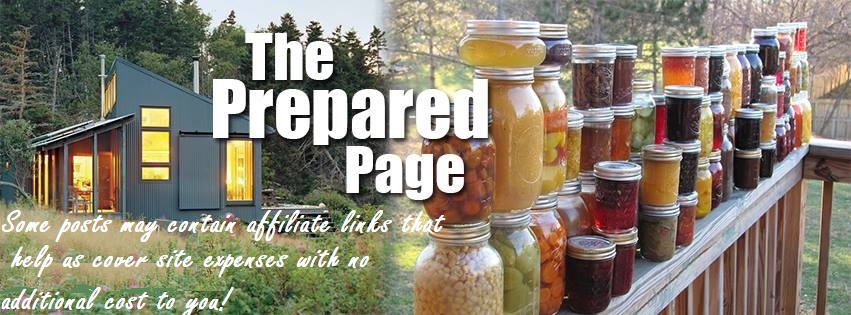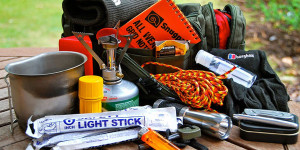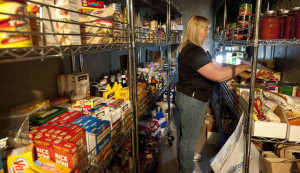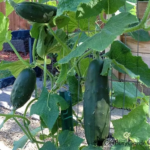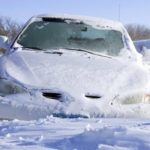Emergency Essentials; Do You Know What They Are?
An important part of surviving any crisis or disaster is having the right equipment and emergency essentials to help you survive.
While it is possible for a well-trained survivalist to get by without that equipment and those supplies, making what they need from whatever they can find, it’s going to be a whole lot harder than it would be if they had what they need on hand.
Think about it a moment, isn’t it easier to get through the average day, when you have everything you need? Well, why wouldn’t it be the same in a survival situation? The big difference is that in that survival situation, there are a lot of things you would normally expect to have, which you won’t have available to you, such as electricity and running water. That’s what turns it from normal into a survival situation.
In order to survive any situation, you need to provide your body with the emergency essentials for survival. Many people wrongly list these as: food, clothing and shelter. While all of those are important, they aren’t really the top three priorities. The list should read:
- Homeostasis (maintaining body temperature)
- Clean water
- Food
To be fair to all those people who are quoting that other bit of poetry, clothing and shelter both contribute to maintaining homeostasis. However, it’s possible to have both and still not be able to maintain your body temperature correctly, if it’s sufficiently hot or cold. You would have to add some means of heating or cooling to the clothing and shelter to get homeostasis. Then there’s the missing item “water” which isn’t in that bit of poetry. You’ve got to have clean water to survive; it’s even more important than food.
Basically, you can live about three hours without maintaining homeostasis;
three days without water and thirty days without food (although some of us can live longer without food). Everything else that we use in our lives is for convenience, not survival.
Now, I’ve got to say that it may take a number of things to provide for any one of those three items. Having food means having the food itself, a means of storing the food and a means of cooking the food. If a buffalo falls dead at your feet, but you don’t have a knife to butcher it with or a means of making a fire to cook the meat, you can still starve. On top of that, you’ll need some way of preserving the meat, or the vast majority of it will simply go bad.
So, when we look at those emergency essentials, we have to expand upon them, in order to include everything necessary to make sure that we will have them. In addition to the things I’ve already mentioned about food, we could also add weapons to hunt with, a means of starting a fire, gardening equipment and supplies and fishing equipment to the category of food.
As we go through each of these categories, we’ll find things to add.
Having clean water means a water source, but it also means having containers for the water and some means of purifying it. If we need fire to help us maintain homeostasis, then we’ll need fuel to burn as well, along with somewhere to burn it.
You can find dozens of lists online and in books of “Everything you need to survive.” If you use one of these lists, always take it with a grain of salt. They’re a great starting place, but are generic. Whoever was writing the list was probably thinking of a specific survival situation, which might be quite different from yours. You also don’t know how much survival expertise the writer of the list has. So, you’ll probably need to customize the list to meet your own needs.
There are some things that don’t necessarily fit one of those categories, but are nevertheless extremely important for survival. Here are a few for you to think about:
- Fire – for cooking and heating
- Light – candles, lanterns, flashlights
- Weapons for self-defense
- A good knife
- First-aid kit
- Personal hygiene
- Cleaning supplies – to maintain a healthy environment
- Pest control – not a survival item, but pest populations tend to increase after a disaster
- Batteries – while not exactly an essential for survival, you’ll need them to use a lot of the electronics you’re used to using
- Tools – to build shelter, repair shelter, build other survival equipment
- Repair parts and materials
The problem with trying to create a list of everything you’ll need for survival is that the list never ends.
You have to start with the basics, and work your way out from there. The absolute essentials are those which meet the three basic needs. But as time goes on in the survival situation, you’ll find that you need more and more to accomplish that.
As supplies get used up, you’ll need some way of creating your own. The classic example is food and water. If you have a six-month supply of food, you’ll eventually reach the end of that time. Then what are you going to do? Having that food on hand met your basic survival need.
But when it ran out, it could no longer do that. So, you either need a bigger supply of food or some means of producing your own food. Ideally, you want more than one means of producing your own food, so that you can be sure of producing more than you need. That way, you’ll be sure of having enough to eat.
As you build your list, start with the essentials, based upon your survival situation, for a three month period of time. Once you’ve accomplished that, you can add to the time and see what that means you need to do. As you continue adding time in stages, you’ll both add more supplies and broaden out the types of supplies (like the means to produce food).
Don’t get frustrated and don’t feel like you’ve got to do it all in one week. Take your time to think it through and do it right. Every step you take will make your family one step more secure in the event of an emergency.
